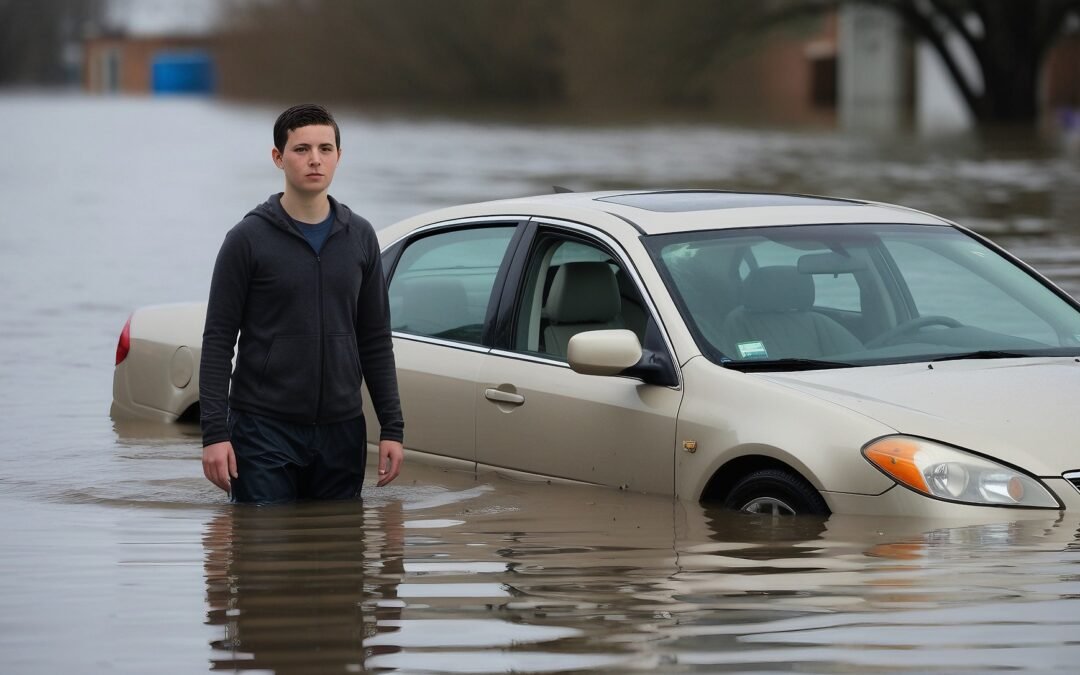Floods are one of the most common and deadly natural hazards, yet they are often underestimated. When roads or paths become flooded, the situation can change from inconvenient to life-threatening in seconds. Whether walking or driving, entering flooded areas presents serious risks that are often overlooked. Here’s a closer look at the dangers involved and why you should avoid flooded areas altogether.
Water Depth and Force Are Deceptive
Why It’s Dangerous to Walk Through Floodwater
Even shallow floodwater can have surprising force. It only takes six inches of fast-moving water to knock over an adult. This depth, which may seem minor, is often enough to cause people to lose their footing, leading to falls, injury, and even drowning in severe cases. Additionally, floodwaters can mask the uneven terrain, open manholes, or sudden drops, further increasing the risk of injury.
Why It’s Dangerous to Drive Through Floodwater
For vehicles, the risks are even higher. Just 12 inches of water is enough to float a small car, and two feet can carry away larger vehicles, including trucks and SUVs. Most floodwater moves with a powerful current, strong enough to lift and pull vehicles downstream, sometimes flipping them over or trapping passengers inside. Drivers often misjudge the water depth and force, leading to deadly situations.
Hidden Hazards Beneath the Water’s Surface
Road Conditions and Obstacles
Floodwater conceals debris, potholes, and other obstacles that can cause both pedestrians and vehicles to get stuck or damaged. Broken glass, sharp objects, tree branches, and downed power lines can hide just beneath the surface, increasing the chance of injury.
Contaminants in Floodwater
Floodwaters are often contaminated with sewage, chemicals, gasoline, and other toxins from surrounding areas. Wading through such water exposes people to dangerous bacteria and pathogens, increasing the risk of infections and illnesses. For vehicles, water exposure can also corrode mechanical components and cause long-term damage to the engine, brakes, and electrical system.
Electrical Hazards in Flooded Areas
Downed power lines are a significant threat during floods. Water is a powerful conductor of electricity, meaning floodwaters may be electrified if live wires are present. This can lead to deadly shocks for anyone who walks or drives through such areas unknowingly. Even low levels of current can be fatal in standing water.
Unpredictable Water Currents
Floodwater currents are more dynamic than they may appear. Water levels can rise or shift quickly, especially if there’s continued rain or if nearby dams, rivers, or drainage systems are involved. Flash floods, in particular, can happen without warning, turning a few inches of water into a torrent within minutes. Attempting to navigate these currents is not only challenging but also extremely dangerous.
Emergency Response Challenges
In flooded areas, first responders face additional challenges that can delay rescue and increase the danger to those in need. Flooded roads or downed trees may prevent emergency vehicles from accessing stranded drivers or pedestrians. These delays can turn a manageable emergency into a crisis, where immediate assistance becomes difficult or even impossible.
Vehicle Damage and Financial Consequences
Driving through floodwater isn’t just a risk to your safety; it can also lead to severe vehicle damage. Water entering the engine or electrical system can lead to expensive repairs or total vehicle loss. Most insurance policies don’t cover flood damage, meaning these costs often fall directly on the vehicle owner. Attempting to drive through even shallow floodwaters could result in costly damage that is often avoidable.
Safety Tips for Avoiding Flood Hazards
Never Walk or Drive Through Flooded Areas
If you encounter a flooded road or pathway, turn around. The rule “Turn Around, Don’t Drown” is widely used for a reason—staying out of floodwater is the best way to avoid danger.
Plan Alternate Routes in Advance
If heavy rain or flood warnings are in effect, check local maps for high-ground routes or alternative paths that avoid flood-prone areas. This pre-planning can be crucial for safe travel.
Stay Updated on Weather Alerts
Monitor weather warnings and flood alerts on local news channels or weather apps. When flash flood warnings are issued, prioritize safety and avoid traveling unless absolutely necessary.
Park on Higher Ground
In flood-prone areas, avoid parking on low ground, where your vehicle could be susceptible to rising water.
Respect Barricades and Warning Signs
Roadblocks and flood warning signs are there for public safety. Avoid bypassing barriers, as they are placed in response to hazardous conditions.
Conclusion
Floodwaters, whether in familiar or unfamiliar areas, are dangerous, deceptive, and should always be avoided. Walking or driving through floodwater risks not only your life but also the lives of emergency responders who may have to rescue you. By recognizing these dangers and following flood safety guidelines, you can protect yourself, your loved ones, and your community.








Be Awesome!
Share Or Like This Post And Get +10 Karma Points :-)